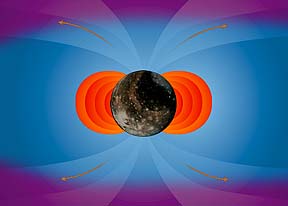This is an artist's conception of the magnetosphere of Ganymede.
Click on image for full size
Windows Original
Magnetosphere of Ganymede
When the Galileo spacecraft flew by Ganymede, it found something that was a big surprise to everyone -- a very strong magnetic field. This is the first time a strong magnetic field had been found near any moon.
To generate a magnetic field, there must be conducting material inside. This may be provided either by iron, or by salt water. The conducting material must also be in motion. This means that Ganymede is not completely frozen, but has either a warm iron core or a salty, hideen ocean. This is completely new idea for an icy moon, and makes Ganymede unique.
You might also be interested in:

The Galileo spacecraft was launched on October 19, 1989. Galileo had two parts: an orbiter and a descent probe that parachuted into Jupiter's atmosphere. Galileo's main mission was to explore Jupiter and
...more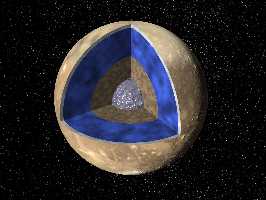
The diagram to the left shows a cutaway of the possible inside structure of Ganymede, based on recent measurements by the Galileo spacecraft. It shows a small core of metal, overlain with some rocky material,
...more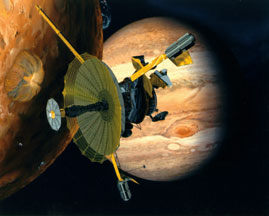
The Galileo spacecraft has finally reached the end of its road. Galileo has been orbiting Jupiter since 1995. On September 21, 2003, Galileo will dive into Jupiter's atmosphere and burn up. This crash
...more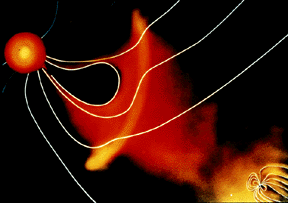
There is a giant magnetic "bubble" in space around the Sun. That "bubble" is called the heliosphere. In a sense, we Earthlings live within the outer atmosphere of our Sun. The solar
...more
Amalthea was discovered by E Barnard in 1872. Of the 17 moons it is the 3rd closest to Jupiter, with a standoff distance of 181,300 km. Amalthea is about the size of a county or small state, and is just
...more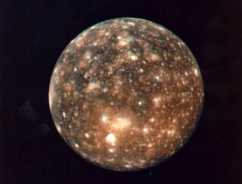
Callisto was first discovered by Galileo in 1610, making it one of the Galilean Satellites. Of the 60 moons it is the 8th closest to Jupiter, with a standoff distance of 1,070,000 km. It is the 2nd largest
...more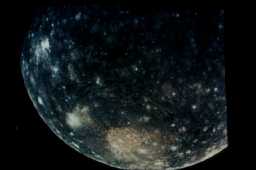
The insides of most of the moons and planets separated while they were forming out of the primitive solar nebula. Measurements by the Galileo spacecraft have been shown that Callisto is the same inside
...more


